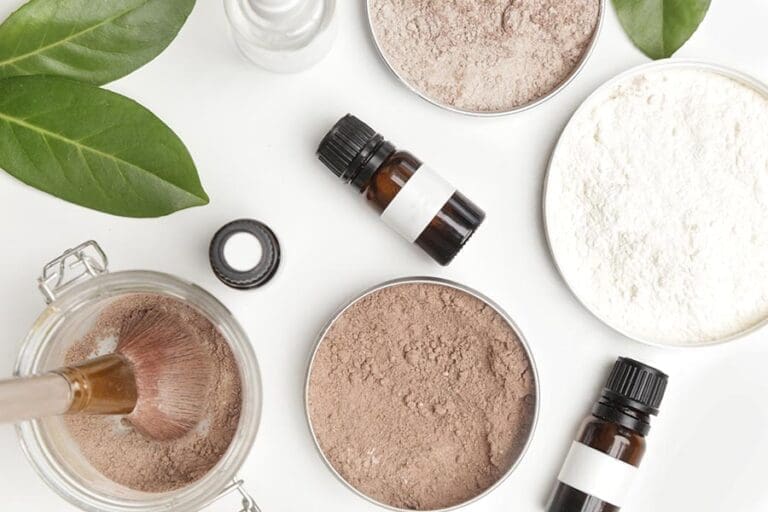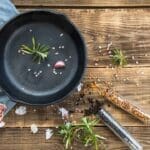Have you ever needed a quick fix for oily hair but didn’t have time for a full wash? Dry shampoo can be a game-changer. But why rely on store-bought products filled with chemicals when you can create your own natural dry shampoo at home?
In today’s post, we’re thrilled to share our personal homemade dry shampoo recipe. It’s ideal for those rushed mornings, travel days, or anytime your hair needs a quick refresh. This recipe is not only easy to make but also uses simple, natural ingredients that you likely already have in your kitchen. Plus, it’s entirely customizable, so you can tailor it to your hair’s unique needs.
Here’s why you should consider making your own dry shampoo:
1. Natural Ingredients: Many commercial dry shampoos contain synthetic fragrances and preservatives. By making your own, you control what goes into your product.
2. Cost-Effective: DIY dry shampoo is much more affordable than most store-bought brands.
3. Eco-Friendly: Reduce waste by reusing containers and minimizing plastic packaging.
4. Customized to You: Adjust the formula to suit your hair type and preferences, ensuring it blends perfectly and works effectively.
So, what makes this DIY dry shampoo so effective? Let’s break down the ingredients:
• Arrowroot Powder: This natural starch helps absorb excess oil from your scalp and hair, leaving it looking fresh and clean.
• Bentonite Clay: Known for its detoxifying properties, bentonite clay not only absorbs oil but also helps to purify the scalp.
• Baking Soda: With its deodorizing properties, baking soda helps to neutralize odors and adds extra cleansing power.
• Essential Oil (optional): Add a few drops of your favorite essential oil for a pleasant scent and additional hair benefits.
Now, let’s get into the step-by-step guide to making your own homemade dry shampoo. Say goodbye to greasy hair days and hello to a refreshed, voluminous look with this simple, effective recipe.
Ingredients:
– 2 tablespoons arrowroot powder
– 1.5 teaspoons bentonite clay
– 3/4 teaspoon baking soda
– 5-10 drops essential oil (optional)
Instructions:
1. Combine Dry Ingredients:
In a small bowl, mix together the arrowroot powder, bentonite clay, and baking soda until well combined.
2. Add Essential Oil:
If using essential oil, add 5-10 drops to the dry mixture. Essential oils such as lavender, peppermint, or rosemary work well. Stir thoroughly to ensure the oil is evenly distributed.
3. Transfer to Container:
Transfer the mixture to a clean, dry container with a lid for storage. An old spice jar with a shaker top or a small jar with a tight-fitting lid works well.
4. Application:
To apply, use a makeup brush or gently shake the dry shampoo onto your scalp, focusing on the roots and oily areas. Let it sit for a few minutes to absorb the oil. Use a towel to thoroughly distribute the dry shampoo in your hair, then brush through to remove any excess powder. Or just brush through your hair to distribute the powder and remove any excess.
5. Storage:
Store your dry shampoo in a cool, dry place. Make sure the container is sealed tightly to keep the ingredients fresh.
Enjoy your fresh and clean hair with this easy-to-make, all-natural dry shampoo!
Tips for Using Homemade Dry Shampoo:
- Choose the Right Essential Oils: Essential oils like lavender, peppermint, rosemary, and tea tree are great additions due to their beneficial properties for the scalp and hair. They also add a pleasant scent to your dry shampoo.
- Application Techniques: For best results, apply the dry shampoo to your roots and oily areas using a makeup brush for precise application. Allow it to sit for a few minutes to absorb excess oil before brushing it out.
- Adjusting for Hair Color: If you have dark hair, consider adding a small amount of cocoa powder to the mixture to help the dry shampoo blend in better with your hair color.
- Frequency of Use: Use dry shampoo sparingly between regular washes to avoid product buildup on your scalp and hair.
- Test for Sensitivity: If you have sensitive skin or are prone to allergies, do a patch test on a small area of your scalp before using the dry shampoo extensively.
By incorporating these tips, you can customize your dry shampoo experience and maintain fresh, clean hair without the need for chemical-laden commercial products.













